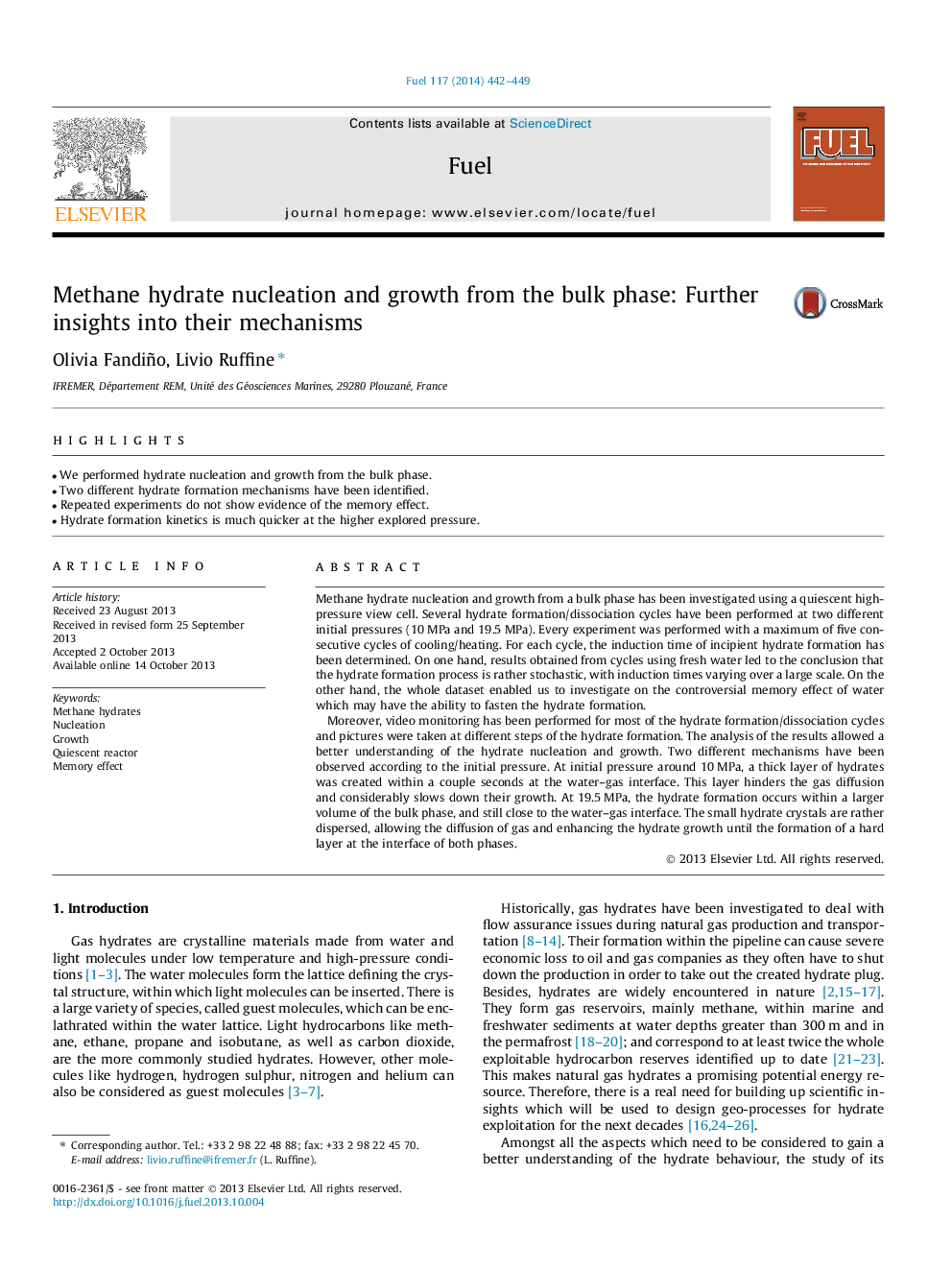| Article ID | Journal | Published Year | Pages | File Type |
|---|---|---|---|---|
| 10272018 | Fuel | 2014 | 8 Pages |
Abstract
Moreover, video monitoring has been performed for most of the hydrate formation/dissociation cycles and pictures were taken at different steps of the hydrate formation. The analysis of the results allowed a better understanding of the hydrate nucleation and growth. Two different mechanisms have been observed according to the initial pressure. At initial pressure around 10Â MPa, a thick layer of hydrates was created within a couple seconds at the water-gas interface. This layer hinders the gas diffusion and considerably slows down their growth. At 19.5Â MPa, the hydrate formation occurs within a larger volume of the bulk phase, and still close to the water-gas interface. The small hydrate crystals are rather dispersed, allowing the diffusion of gas and enhancing the hydrate growth until the formation of a hard layer at the interface of both phases.
Related Topics
Physical Sciences and Engineering
Chemical Engineering
Chemical Engineering (General)
Authors
Olivia Fandiño, Livio Ruffine,
